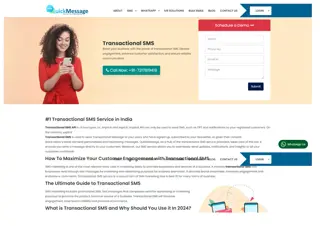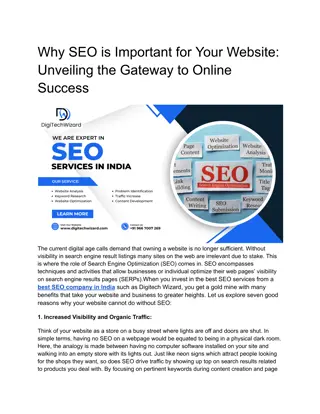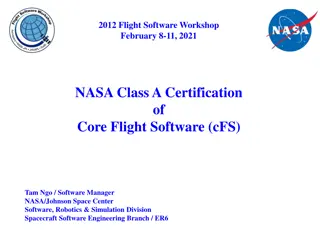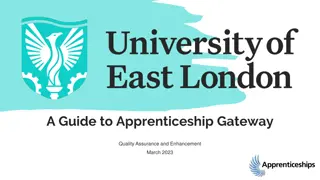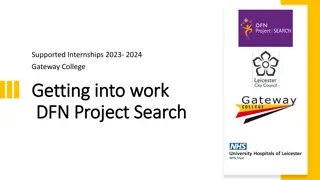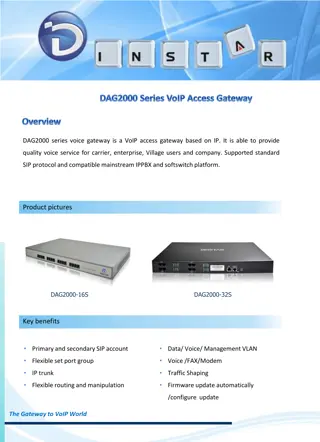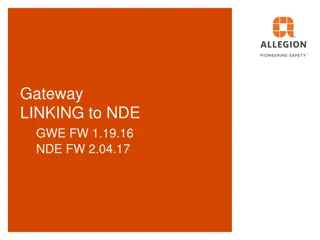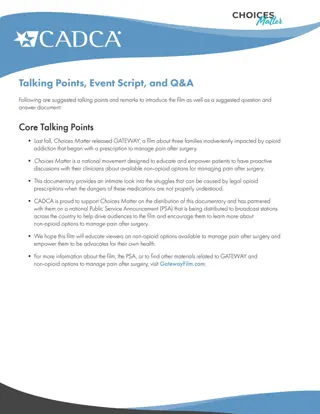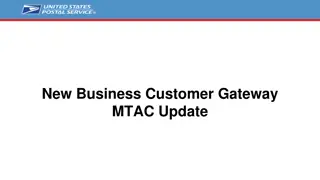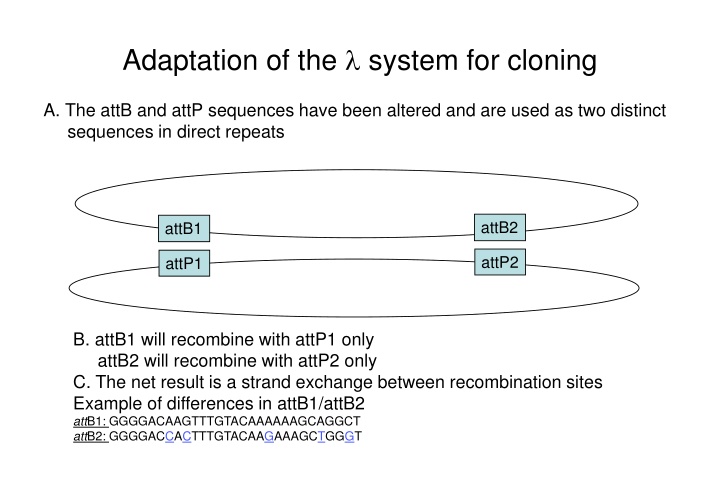
Cloning System Adaptation and Gateway Recombination Techniques
Explore the innovative system for cloning adaptation, including site-specific recombination strategies and the GATEWAY system. Learn about the efficient shuffling of DNA fragments between vectors and how to utilize the Gateway System for site-directed recombination cloning.
Download Presentation

Please find below an Image/Link to download the presentation.
The content on the website is provided AS IS for your information and personal use only. It may not be sold, licensed, or shared on other websites without obtaining consent from the author. If you encounter any issues during the download, it is possible that the publisher has removed the file from their server.
You are allowed to download the files provided on this website for personal or commercial use, subject to the condition that they are used lawfully. All files are the property of their respective owners.
The content on the website is provided AS IS for your information and personal use only. It may not be sold, licensed, or shared on other websites without obtaining consent from the author.
E N D
Presentation Transcript
Adaptation of the system for cloning A. The attB and attP sequences have been altered and are used as two distinct sequences in direct repeats attB2 attB1 attP2 attP1 B. attB1 will recombine with attP1 only attB2 will recombine with attP2 only C. The net result is a strand exchange between recombination sites Example of differences in attB1/attB2 attB1: GGGGACAAGTTTGTACAAAAAAGCAGGCT attB2: GGGGACCACTTTGTACAAGAAAGCTGGGT
Summary of recombinations exchange of fragment between sites 1 and 2 BP clonase mix vector A vector A LR clonase mix vector B vector B GATEWAY system (sold by Invitrogen) when attB1 recombines with attP1, new sequences are created in each molecule at each site! attR1 and attL1 sequences are generated (see colours in fig above) Similarly if attB2 recombines with attP2, attR2 and attL2 sequences are generated attB is recombined with attP with BP clonase mix attR is recombined with attL with LR clonase mix
The gateway system for site-directed recombination cloning Gway.jpg (23757 bytes) The Gateway reactions are in vitro versions of the lambda bacteriophage recombination system Allows efficient shuffling of fragments between vectors saves time! Exclusive rights by Invitrogen reagents are expensive! How to Enter the Gateway System 1. Traditional restriction endonuclease/ligation cloning 2. topoisomerase cloning 3. Add attB sites on PCR product followed by BP recombination video clip http://www.invitrogen.com/content.cfm?pageid=10541#
To start: Start with an insert and an entry vector pDONR is the name of one that is used a lot Prepare your insert: PCR amplify with restriction sites on the primers Use Topoisomerase to clone into the vector (also cut at a restriction site) PCR amplify with the compatible att sites in the primers
PCR amplify with restriction sites on the primers Ligate into a vector cut with compatible REs The construct will have att L sites to either side of the restriction site Now you have your entry vector with att L sites, can introduce into many other vectors for multiple applications att L2 att L1
Topoisomerase cloning: Can be used for ligation in cloning experiments Advantage over ligases is a higher efficiency of ligation. Disadvantage is the HIGH cost of purchasing vectors with attached topoisomerase.
Topoisomerase cloning: TOPO T-vector Vectors compatible with the gateway system are available Note the attL1 and attL2 in the example shown



